August 21, 2015
Air Date: August 21, 2015
FULL SHOW
SEGMENTS
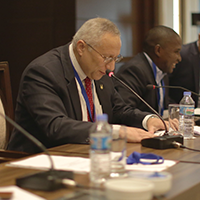
World Islamic Leaders Call For Climate Action
View the page for this story
Muslim political leaders, scholars and scientists from 20 countries have issued an “Islamic Declaration on Global Climate Change.” Climate Action Network International Director, Wael Hmaidan, tells host Steve Curwood from Istanbul that Islam teaches that it’s a sin to ignore climate change, and the declaration calls on the world’s 1.6 billion Muslims to act on global warming as a duty, and challenges other peoples and faiths to top these actions. (12:30)
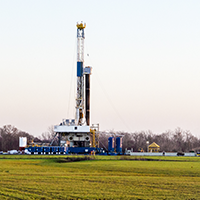
Obama Adds Methane to Climate Protection Rules
View the page for this story
Natural gas is often touted as the greener fossil fuel than coal, but methane leaks from the natural gas system can offset those climate benefits. The EPA has announced new regulations to curb methane emissions from the natural gas system, but only from new gas and oil wells. Speaking with host Steve Curwood, Vermont Law School Professor Pat Parenteau discusses the new methane regulations, and the latest legal challenges to Obama’s carbon dioxide rules for power plants. (08:55)
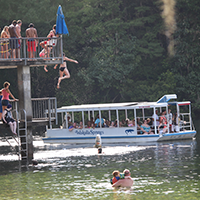
Florida's Disappearing Springs
/ Doug StruckView the page for this story
Florida’s springs are a wonder, bubbling up crystal clear from the state’s limestone aquifer. But persistent drought, agriculture and a growing population are polluting some once pristine springs. As reporter Doug Struck discovered when he returned to his favorite childhood swimming hole, Wakulla Spring is now green, murky and full of algae. (07:40)
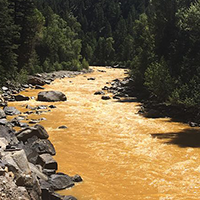
Beyond the Headlines
/ Peter DykstraView the page for this story
In this week’s trip beyond the headlines, Peter Dykstra reminds host Steve Curwood that despite the recent EPA-induced mine waste spill on the Animas River, larger spills from abandoned mines contaminate the nation’s rivers daily. And on the eve of the anniversary of Katrina, Dykstra remarks that more people are moving into harm’s way, and looking back into environmental history, notes how unwise it is to mix steeples, lightning and ammunition. (04:45)
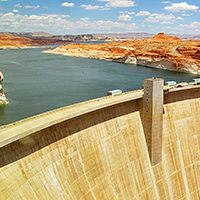
Edward Abbey, Wallace Stegner and the American West
View the page for this story
Author David Gessner discusses with host Steve Curwood the legacies of the two writers he explores in his new book, All the Wild That Remains: Edward Abbey, Wallace Stegner, and the American West. Abbey’s fiery, pugnacious attitude towards wilderness preservation departed vastly from Stegner’s more mild-mannered, eloquent persuasion on the cause, yet both Abbey and Stegner were true writers of the Western landscape. (13:00)
Show Credits and Funders
Show Transcript
HOST: Steve Curwood
GUESTS: Wael Hmaidan, Pat Parenteau, David Gessner
REPORTER: Doug Struck, Peter Dykstra
[THEME]
CURWOOD: From Public Radio International, this is Living on Earth.
[THEME]
CURWOOD: I'm Steve Curwood. The world’s Islamic leaders issue a call to all the faithful to take action on climate change. It’s a sacred duty.
HMAIDEN: It's a core function of Islam to care for the planet. It's a responsibility. If you don't act on climate change, it's actually a sin, haram, which means you get punished. It's something very inspiring, even for climate activists.
CURWOOD: The faith-based fight for the climate gains billions more allies. Also, a trip back to a beloved childhood swimming hole finds the once clear water murky and overgrown with algae.
THOMPSON: I have this vision in my eye of crystal clear, air clear water, and now the water’s green or brown and dark. It makes me sad.
CURWOOD: What went wrong to make Florida’s jewels disappear. We’ll have those stories and more this week, on Living on Earth. Stick around.
[NEWSBREAK MUSIC: Boards Of Canada “Zoetrope” from “In A Beautiful Place Out In The Country” (Warp Records 2000)]
ANNOUNCER: Support for Living on Earth comes from United Technologies – innovating to make the world a better, more sustainable place to live.
[THEME RETURN]
World Islamic Leaders Call For Climate Action
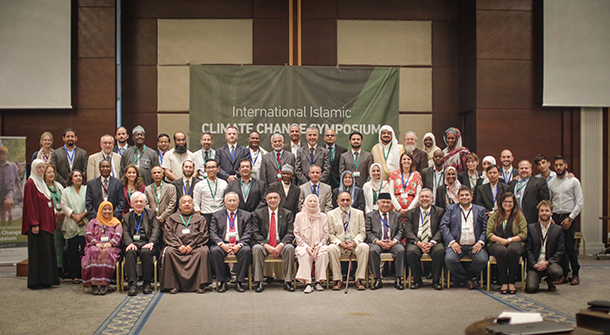
The International Climate Change Symposium took place on August 17-18, 2015. In attendance were several Grand Muftis, Islamic leaders, scholars, scientists and climate activists. They they drafted and announced the Islamic Declaration on Climate Change. (Photo: Islamic Relief)
CURWOOD: From the Jennifer and Ted Stanley Studios at the University of Massachusetts Boston and PRI, this is Living on Earth. I’m Steve Curwood. A coalition of 80 leading Islamic clerics, scholars and officials meeting in Istanbul has issued a declaration on climate change, “calling on all nations and peoples to phase out greenhouse gas emissions as soon as possible”. Concern about global warming has been building in the Muslim world ahead of the UN summit, and some Saudi clerics have issued a fatwa ordering climate protection, though it’s received little notice compared with the recent encyclical from Pope Francis. Of course the Pope leads 1.2 billion Roman Catholics while there is no central leader to speak for the world’s 1.6 billion Muslims. But Islamic nations, including wealthy oil-producing states, are taking action on global warming, says Wael Hmaidan. He’s director of Climate Action Network International, one of the conference organizers and joins us now from Istanbul. Welcome to Living on Earth.
HMAIDAN: Thank you. Glad to be here.
CURWOOD: Talk to me a bit about the Islamic religion and what the literature and tradition say about protecting nature and the planet and so on.
HMAIDAN: Well, I was born Muslim, but I am not a practicing Muslim, but I learned a lot in the past two days from the conference and I was really happily surprised by how rigorous the Koran and the Islamic teachings on the environment and the care for the planet. It's a core function of Islam to care for the planet. It's a responsibility; if you don't act on climate change, it's actually a sin, a haram, which means you get punished. It’s surprising; it talks about the delicate balance that all the creatures have on Earth and it's the responsibility of humans to protect this balance. It also talks actually about how humankind should not think that they are more important than other creatures. It talks about the role of all creatures and the need of respect, this diversity in the planet. So all of these kinds of proverbs from the Koran and the Islamic teachings, as well as stories about Prophet Mohammed's life and his care for the environment clearly puts environmental care and climate change key issue for an Islamic teaching and hearing strong statements saying that it is forbidden not to phase out greenhouse gas emissions coming from Islamic scholars is something very inspiring even for climate activists.
CURWOOD: I have a copy of the Koran, the translation is the Yusuf Ali translation. The very first versus says "Glory to God most high full of grace and mercy. He created all, including man. To man he gave a special place in his creation, he honored man to be his agent and to that end, endowed him with understanding, purified his affections, and gave him spiritual insight so that man should understand nature, understand himself, and know God through his wondrous signs and glorify him in truth, reverence and unity." If you compare that to the beginning of the Bible, Genesis, some people translate that to mean that God gave man dominion over nature and all the creatures so there may be a race that's on here, Wael.
HMAIDAN: What's interesting in the declaration -- they call for a race, and they welcome the race, and I'm happily surprised by this knowledge where they ask, they challenge everyone to exceed them and be more ambitious on climate change, inviting all faiths to join in the fight and so on.
CURWOOD: Let's talk in detail about climate change the declaration that was developed in the symposium. Outline for me the actions and goals it has set and what kind of language was used to express these.
HMAIDAN: So, in terms of goals and numbers I think we don't have any document that is asking here as this document what needs to happen. They clearly talk about phasing out fossil fuels. They clearly say that rich countries, that all rich countries need to phase out their fuel emissions not later than the middle of the century. It clearly calls on all nations to go 100 percent renewable energy as soon as possible. It also calls on keeping two-thirds of fossil fuel reserves in the ground. It also has a request to businesses and the private sector needing to go 100 percent renewable energy as well as all Islamic organizations and communities and they have a long list of these communities from Islamic universities to mosques, to organizations and so on to take strong action on climate change and start changing their behavior.
CURWOOD: The declaration directly acknowledges that climate change is going on and it's happening at a faster rate than ever before, much of which is due to the human action. It presents evidence for this. So please tell us about those acknowledgments and how they'll affect the Muslim communities response to climate change in your view?
HMAIDAN: So we've never had a skeptics community in the Islamic world, from all the Islamic countries really no one stood up and that climate change is not happening. Islam leaves science to scientists and we hear what scientists said and that there's a consensus on the science of climate change and that's what the situation is.
CURWOOD: So, many of the oil-rich nations are, of course, Islamic nations. This declaration is asking them to go out of business, it sounds like.
HMAIDAN: Some people might see it like that, but for the participants, it is not. For the participants, it's duty to do it and it's not challenging them or confronting them. They looked at it apolitically as faith individuals and faith organizations. They looked at the issue morally, and what needs to be done. So the numbers they put is what needs to happen, and we have no choice, otherwise we lose our economies as well, because climate change can lead to the collapse of human economy.

Mohamed Ashmawey, CEO of Islamic Relief Worldwide and one of the Symposium organizers addresses attendees. (Photo: Islamic Relief)
CURWOOD: So, historically, Saudi Arabia has been seen as oppositional, particularly in the Intergovernmental Panel on Climate Change, the science group looking at this, and sometimes at the UNFCCC meetings, the big climate negotiations as well. What representation from Saudi Arabia did you have at this meeting and what do you think the Saudi response is going to be?
HMAIDAN: So, we had three individuals from Saudi Arabia, from different sectors, so they were very strong on the need to act on climate change and, yes, Saudi Arabia has sort of been very obstructive in the negotiations. There has been a lot of changes though in the past few years. We can see them putting a very ambitious solar target. We can see them preparing a new commitment for the Paris agreement. Many statements by the royal family talks about the end of the age of fossil fuels and the new energy, and we know that we cannot rely on fossil fuels forever for our economic development. We can see that even the idea of keeping fossil fuel costs so low which is keeping a lot of new fossil fuel resources out of touch because they're not economical any more like the Arctic fossil fuel reserves, the deep sea oil and many others. So, I don't think they've done this action because they want to reduce climate change, but we can build an argument with them on the importance of strong climate action because it has economical benefit for them and it can help them and their diversification mission.
CURWOOD: So, let me see if I hear what you're saying: on one hand you're saying that it may be an unintended consequence but as Saudi Arabia keeps pumping oil at a relatively low-cost, this is keeping stuff like tar sands and deep sea oil from being developed which is good for the planet, and on the other hand are you also saying that they might be willing to turn the immense wealth that they have today, use that capital to build the new businesses before they are put out of business of fossil fuels?
HMAIDAN: Yes, and their role as obstructionist can change, and I see them changing a lot over the past three, four years. If you listen now to Saudi Arabia and compare it to what they said before Copenhagen, it's 180 degrees different.
CURWOOD: Give us a bit of a roadmap on the diversity in Islam on this issue. What faultlines, if any, are there in the question of climate with the different sects, the different points of view in Islam?
HMAIDAN: The faultlines are not between the sects, but between the rich and poor Islamic countries. So you have Saudi Arabia, Qatar, United Arab Emirates...rich Islamic countries. While on the other hand you have Bangladesh, Indonesia, Maldives and others who are poor countries and suffering greatly from climate change, all of them. So what's good about this Islamic declaration, it gives an opportunity for Islamic countries to discuss and find a compromise among themselves, and I think it's easier to reach a solution because at the moment the discussion between these countries is happening in the UNFCCC. So I think this could be a way to make some difficultt countries accept climate action even more.
CURWOOD: Let's go to politics for a moment here or international negotiations. Now, this declaration also points to the fact that previous climate agreements have not been ratified on a wide enough scale to make a major difference. How do you think this affects climate action perceptions in the Muslim world leading up to this big set of negotiations in Paria later this year?
HMAIDAN: So, yes, it does build expectation from Paris, the declaration. It does target the international climate negotiations directly, saying that we need to achieve a breakthrough in Paris and not to repeat what happened in the past opportunities. And the good thing about what has happened here in the two days is that they didn't just aim to produce a declaration and that's it, but their plan is to take this declaration and go to governments, go to Muslim communities, go to UN agencies to talk about it and engage these governments in the declaration and they want to do it before Paris because they want to have it impacting Paris.
CURWOOD: So what happens next now after the symposium? Is there some kind of organization that is created? What keeps things moving forward?
HMAIDAN: There's an agreement to establish an informal group like a network. My understanding that the name that was adopted is Muslims for Climate. That will follow up on all the ideas that came out from the conference. And the ideas are varied, some of them are high-level like I mentioned going to the UN agencies, to governments, but also the representatives of the organizations that attended want to create action plans in their communities of influence, to bring the declaration and a lot of ideas came forward. Someone said that we need to have a copy of the declaration in every mosque hanging on the wall for people to read, others are talking about having fatwas and khutbahs about climate change which is like the weekly talks in every mosque. We need to transform all mosques to renewable energy, and so on, so a lot of ideas, and they've created this platform Muslims for Climate to continue the dialogue and implement all these ideas that came up.
CURWOOD: Wael Hmaidan is Director of Climate Action Network International. He joined us on the line from Istanbul, Turkey. Thank you so much for taking time with us today.
HMAIDAN: Thank you.
Related links:
- Read the Declaration here
- International Islamic Climate Change Symposium
- ‘Green Muslims,’ Eco-Islam and Evolving Climate Change Consciousness
- Hunger Strike for Climate Action
- Human Rights on the UN Climate Change Agenda
- More about Wael Hmaidan and Climate Action Network International
[MUSIC: Anouar Braham, Leila au Pays du Carroussel, All Songs Considered 3, ECM]
CURWOOD: Coming up -- methane leaking from fracked wells can be even harder on the climate than burning coal, and the Obama Administration has a new rule. Stay tuned to Living on Earth.
[CUTAWAY MUSIC; Rene Lacaille and Bob Brozman, Debussy a la Reunion, All Songs Consiered, Riverboat Records/World Music Network]
Obama Adds Methane to Climate Protection Rules
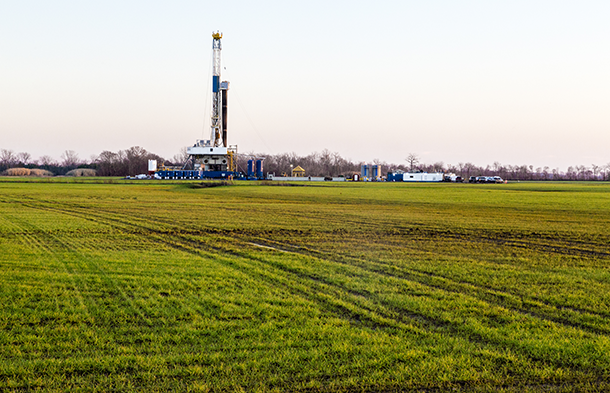
New studies have found that methane leaks from natural gas systems are far more common than the government estimates. (Photo: Daniel Foster, Flickr CC BY-NC-SA 2.0)
CURWOOD: It's Living on Earth, I'm Steve Curwood. The Obama Administration continues its series of regulations to address global warming in advance of the UN Climate Summits, and the latest effort calls for more than a 40 percent reduction in methane from new oil and gas wells. The methane rules come on the heels of the controversial power plant rules to sharply reduce carbon dioxide emissions. And even before those power plant rules were formally announced in the Federal Register, 15 Republican-led states once again asked the courts to block implementation. Professor Pat Parenteau of the Vermont Law School joins us now to discuss these rules and the ongoing court battles. Pat, welcome back to Living on Earth.
PARENTEAU: Thank you, Steve.
CURWOOD: So first, tell me what exactly are these methane rules and how important are they from a climate perspective?
PARENTEAU: These rules apply to the wells that produce natural gas, both conventional wells and the new fracking wells that use the hydraulic fracturing technology. They're designed to reduce emissions of methane that leak from the wells and from compressor stations, also some volatile organic compounds - benzene, xylene - some pretty nasty air pollutants. So these are very welcome rules. The states sued EPA some years ago challenging the failure of EPA to set specific methane standards for these gas production wells, and so EPA has now done so.
CURWOOD: And from a climate perspective, remind us how important methane is.
PARENTEAU: Very important. The latest studies are that methane in the short run, in the 20-year time frame, is 87 times more potent as a greenhouse gas than carbon. And in the longer timeframe of 100 years it's about 37 times more potent, so very important say the scientists to get a handle on methane emissions.
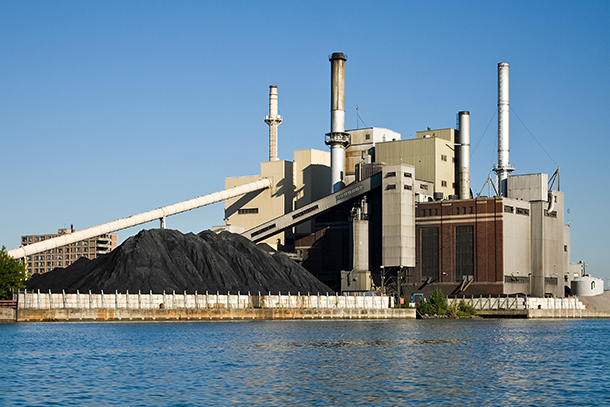
President Obama’s new Clean Power Plan targets cleaning up the nation’s coal fired power plants, but several coal states are filing a legal challenge. (Photo: Bigstock Photo)
CURWOOD: Now, if these rules in fact get implemented, how far do they go to make natural gas a viable fuel from an environmental perspective?
PARENTEAU: You know, that's a very difficult question to answer. This is only looking at the production end of the natural gas system. If you think about all the thousands of miles of pipelines and distribution systems including right there in Boston, leaks occur at every stage of the process and this rule is only looking at the front end of it. So the total loss of methane from the entire natural gas system is actually unknown, and there have been lots of studies of what are called top-down studies using satellites and other aircraft to measure the amount of methane that comes off of a major basin like the Uintah basin in Utah and the studies there show that the methane leaking from the entire area that is being developed is much much greater than was thought - up into the 17 percent figures of methane leakage. So we're a long way frankly from understanding what the net effect of relying on natural gas is in terms of achieving some of these really stringent climate goals of limiting warming to two degrees Celsius, for example. It's not clear that gas can do that.
CURWOOD: How is the oil and gas industry responding to the Obama methane gas rules?
PARENTEAU: Well, I know that EPA went out of its way to consult with the industry. My guess is that most of the industry, while they may not be happy with these rules, are probably going to accept them. The publicity around fracking has gotten to the point where I think the gas industry knows that it needs to be doing more to convince the public that it's doing everything it can to make gas safe and environmentally sound, so I guess I would - would hope to see that the industry would actually accept and maybe even embrace these rules and then use them as an argument in favor of developing yet more gas resources.
CURWOOD: So what kind of legal challenges might we expect to see from industry on this?
PARENTEAU: Well, some of the industry may say that the technology to capture the amount of methane that the rule requires is not readily available at every location, but overall I don't see that these rules are imposing the kinds of costs that we've seen from other rules, like the mercury rule that we've talked about before. Gas is after all a valuable commodity and the industry is fond of saying, "My goodness, we don't want to leak methane, we want to capture as much as we can and sell it", so EPA is basically saying to the industry, "Prove it. Do it."
CURWOOD: Pat, I want you to bring us up to speed on industry challenges to the power plant rules, particularly this big regulation of the EPA's in the process of issuing to regulate carbon emissions, and I understand that some 15 states went to court asking the Circuit Court of Appeals there in DC to block the rules even before it was put in the Federal Register. What's going on?
PARENTEAU: Right, well these are some of the same states that sued some months ago when it was just a proposed rule to try to get the court to block EPA from even proceeding with the rulemaking. That effort failed because the DC circuit, which reviews these rules, held that it was premature to challenge a rule that wasn't even final. Now these same states and some of the coal industry are back into court saying, “Well the rule is now final in the sense that EPA Administrator Gina McCarthy has signed it, and so now we want the court to stay the rule and allow the courts to review on the merits whether EPA has the authority to actually promulgate this rule and require the changes in our energy system that will reduce carbon emissions.”
Like the earlier case, a lot of us that have been studying these various attempts to block EPA believe the court will not grant the stay or the injunction that the states are seeking and the right outcome is for the court to say, "Wait until the rule is published in the Federal Register, that's the act that the Clean Air Act says triggers the process of judicial review and then let the courts consider the case in due course." The first deadline for the states to meet under this new rule isn't until summer of 2016 to submit a plan. And if the states can't comply with the 2016 date, EPA has left open the possibility of extending it for another two years to 2018. So EPA's argument is going to be there's plenty of time for the courts to review what we've done and make a decision, and in the meantime the smart states should get busy preparing these plans to comply with the Clean Air rule that we promulgated.
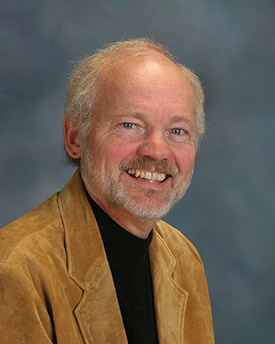
Pat Parenteau is Senior Counsel with the Environmental and Natural Resources Law Clinic and Professor of Environmental Law at the Vermont Law School. (Photo: Vermont Law School)
CURWOOD: There's not a lot of time for the Obama Administration to bring this rule to full fruition. To what extent are the states trying to keep the Obama Administration from getting over that figurative goal line?
PARENTEAU: Oh, I think that is part of their strategy. They would like to see this rule kicked into the next administration. We don't know who that will be but some people may be hoping that it's a more sympathetic administration to the industry and to the states that have to comply with the rules. On the other hand, it's also true that since the real expertise in developing this rule is the staff of EPA that's there now and in particular, Gina McCarthy the administrator, there's a sense that this is the group that needs to defend this rule, they are the ones who developed it, who know it. Obama, of course, has staked his legacy on this rule. So in terms of of what's the best opportunity to defend this rule and win approval from the courts, it would be doing it now, sooner rather than later.
CURWOOD: How does all this maneuvering affect the United States negotiating position going into the big Paris climate negotiations later this fall?
PARENTEAU: Well right now the United States has earned itself a lot of credibility with this plan in places like China and India where the President has been actively negotiating with the leaders of those countries to get them to come to Paris open to the idea of making serious commitments to reduce their carbon footprints. If this rule is derailed by the courts, that could affect, I think, the US leverage over some of the major emitters. So there is right now, I think, a window where opponents of the rule are trying to do all they can to send a signal to the rest of the world that although President Obama is on board with this rule, a large portion of America is not, and try to influence perhaps the course of the negotiations in Paris away from forcing really binding targets on the US.
CURWOOD: Pat Parenteau teaches environmental law at the Vermont Law School. Pat, thank you for taking the time with us today.
PARENTEAU: You’re welcome, Steve.
Related links:
- The EPA’s new methane rules
- The EPA’s Clean Power Plan for Existing Power Plants
- More about the President’s climate plan
- Pat Parenteau is a professor at Vermont Law School
[MUSIC: Edgar Meyer/Chris Thile/Stuart Duncan/Yo-Yo Ma, Qurter Chicken Dark, Goat Rodeo, Sony Music Entertainment]
Florida's Disappearing Springs
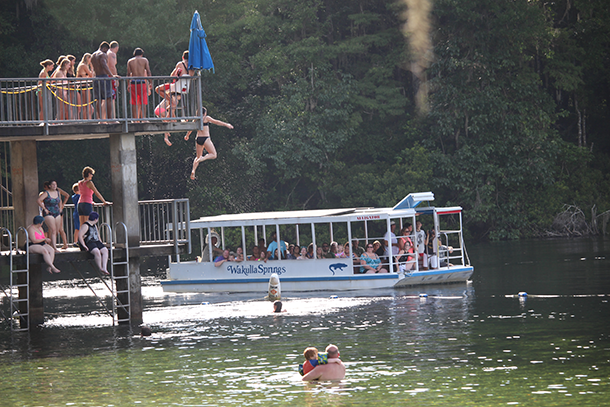
A “jungle riverboat cruise” passes the diving platform at Wakulla Springs. (Photo: Doug Struck)
CURWOOD: Well, this August the many Presidential candidates are busy shaking hands at the Iowa State fair, trying to sell their message to those first caucus voters, but the American public’s attention is still mostly on summer. There’s nothing like an escape to the seaside, or the mountains‚ or to other favorite places for fresh air and sunshine. But as reporter Doug Struck discovered when he took a sentimental trip back to a beloved childhood haunt, sometimes what you reveled in way back when just can’t be found again.
[KIDS PLAYING]
STRUCK: My childhood swimming hole was a mystical place. It was home of the Creature from the Black Lagoon‚ and Joe Panther and Tarzan. It was a movie stand-in for the Bermuda Triangle‚ - think Jack Lemon trapped in a submerged jetliner staring out at a freshwater bass.
This was Wakulla Springs, Florida, a place with water so vodka-clear it drew filmmakers, tourists and locals. We used to say you could flip a dime overboard and watch it hit the bottom 120 feet down. Schools of catfish glided in ethereal space as tourists oohed-and-ahhed in glass-bottomed boats above.
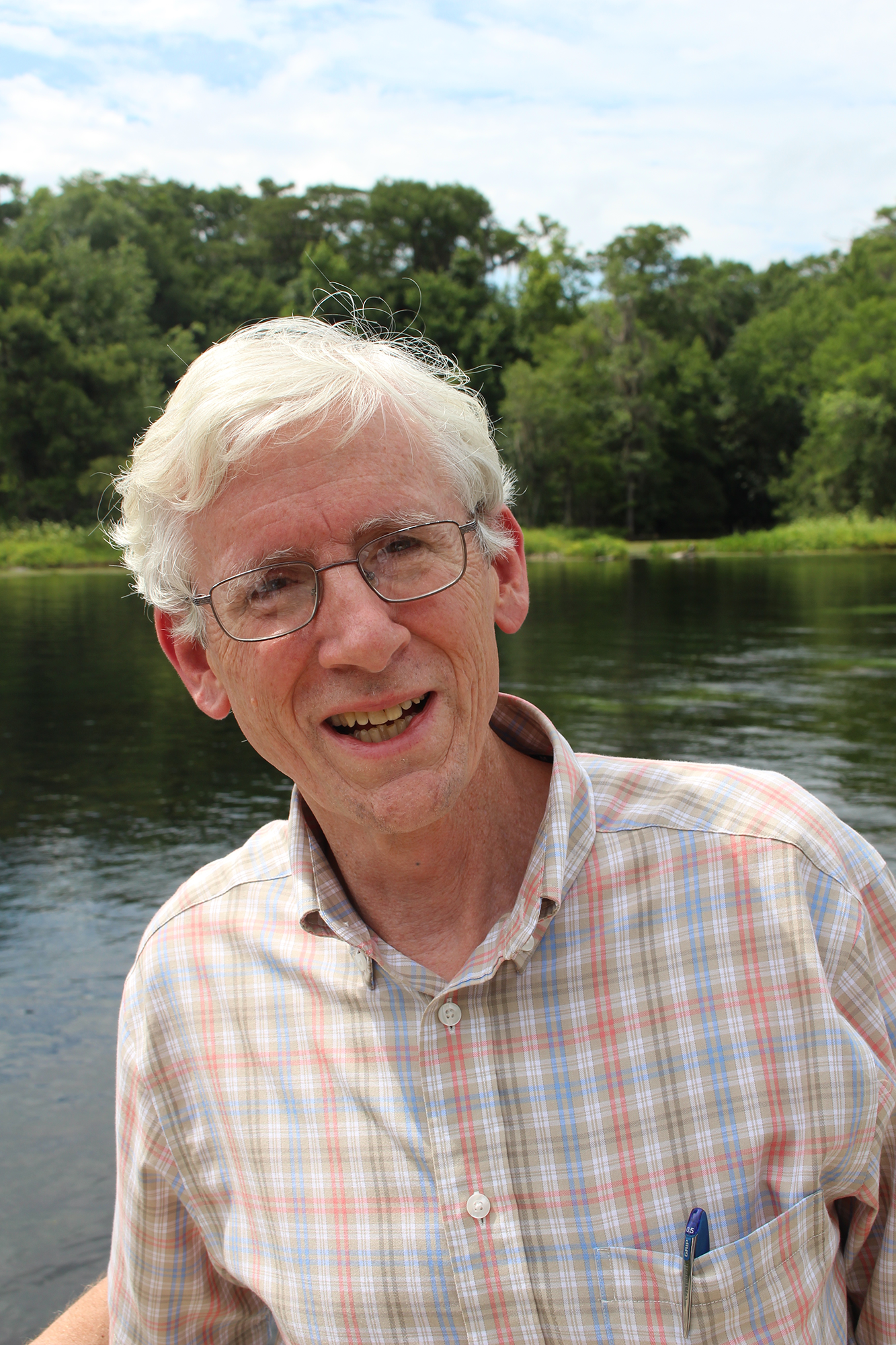
Dan Pennington, an environmental planner in Tallahassee, has watched the growth of algae in the springs. (Photo: Doug Struck)
The water was so clear that when Old Joe, an 11-foot gator, left his sandbar a couple hundred feet across the spring and moseyed over to our side, we could all see him coming. We got out of the water until Old Joe left, presumably with a toothy grin of amusement at his sport.
Wakulla and other springs bubble up from Florida’s limestone aquifer in clear, goosebump cold, brilliance. Marjory Stoneman Douglas, the famed biographer of Florida’s wetlands, called the springs “pools of light.” The lights are dimming.
PENNINGTON: If you've watched this spring just since 1980 since I've been watching it, you have watched this carpet of algae move up into the system and begin to cover everything.
STRUCK: Dan Pennington is an environmental planner in Tallahassee.
PENNINGTON: Now you just find strings of algae kind of hooked to the dirt, hooked to the rocks that are on the bottom and just sort of hanging and flowing in the current.
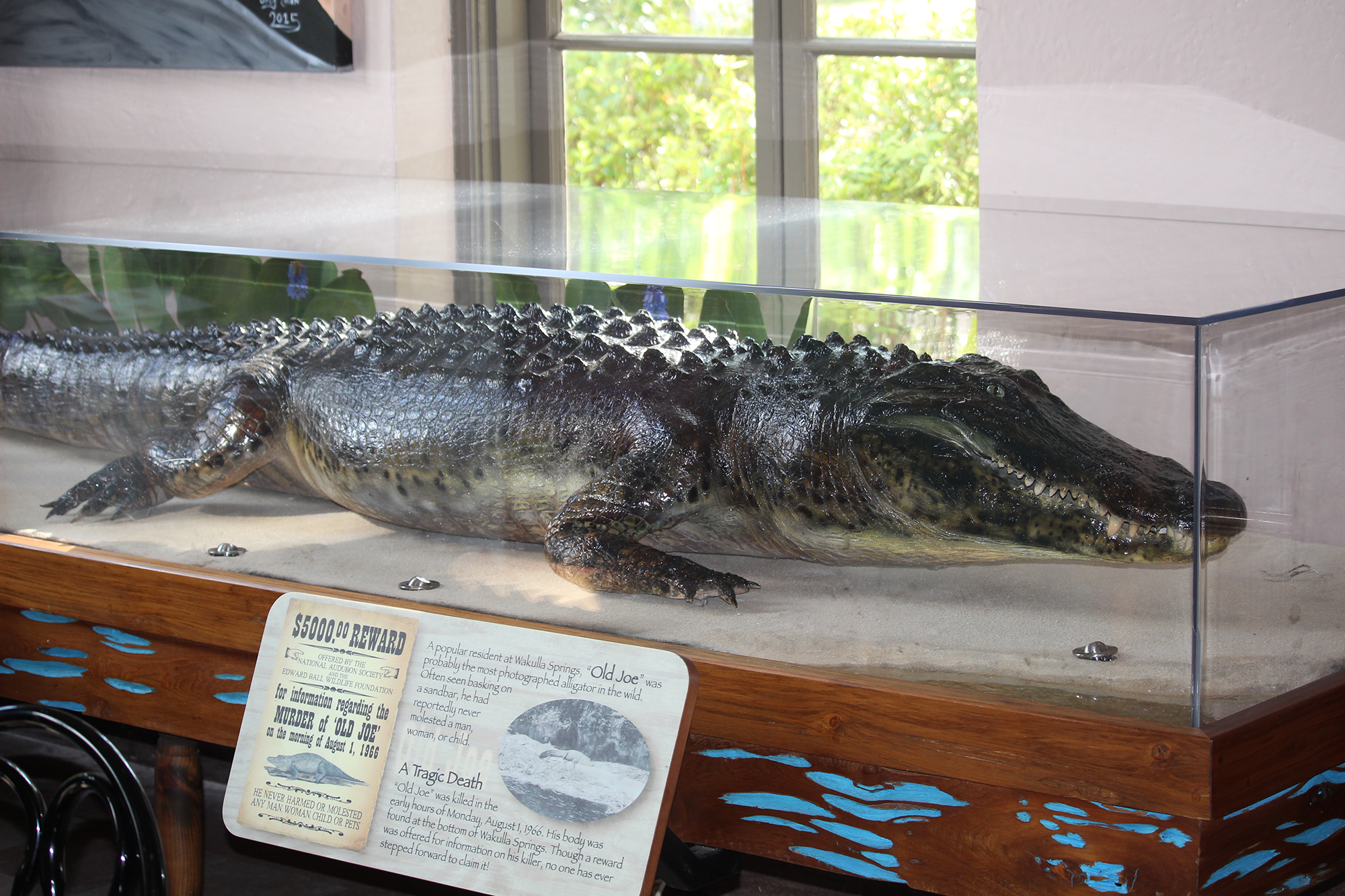
“Old Joe” shared Wakulla Springs with swimmers until a poacher shot him. He is now stuffed and behind glass. A reward still stands for his murderer. (Photo: Doug Struck)
STRUCK: Algae not only coats the bottom, but grows in microscopic particles that float in the water, turning it from clear to green.
KNIGHT: My name’s Bob Knight, I’m the director of the Howard T. Odum Florida Springs Institute, located in Gainesville, Florida. We have about 1000 natural springs in Florida, artesian springs, and they are across-the-board suffering from reduced water volume flow rates and they are across-the-board polluted with nitrate nitrogen.
STRUCK: We talked as we hiked into Three Sisters Springs near Crystal River Florida. It’s a small fresh pool alive with swimmers on a hot summer day.
KNIGHT: But that right there is a spring boil area, that is where the water… (fades out).
STRUCK: The problem is too many people, who draw water for everything from drinking to watering lawns to irrigating fields from the same aquifers that feed the springs. And as the aquifers drop, the humans add more nutrients from fertilizer and sewage. Jim Stevenson was chief naturalist at the Florida Department of Environmental Protection.
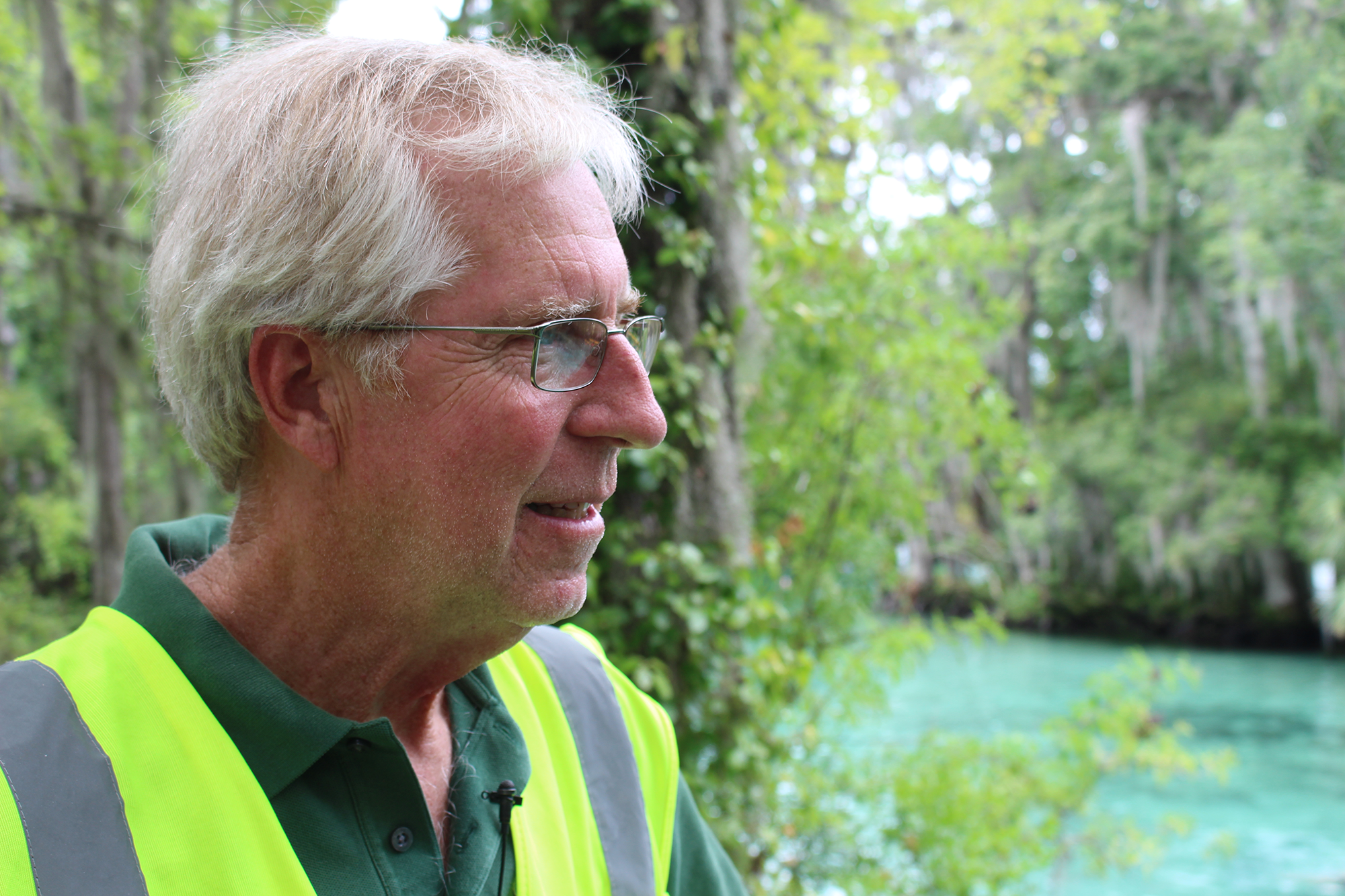
Director of the Florida Springs Institute Bob Knight says all of the state’s springs are suffering. (Photo: Doug Struck)
STEVENSON: Springs die of two human acts. One is overpumping the aquifer that feeds the spring. And the other is putting nitrates into the aquifer and the source of nitrates are we human beings in the form of fertilizers, whether it's on golf courses, or lawns or crops. And also human waste as well as livestock waste.
STRUCK: To help reduce the nitrates in Wakulla Springs, the city of Tallahassee spent more than a quarter billion dollars on an advanced wastewater treatment plan. That’s helped, but there still are thousands of homes with septic fields in the watershed of the springs. The nutrients from these septic fields drain quickly through the sandy soil, into the aquifers, and out into the springs, where they feed the algae.
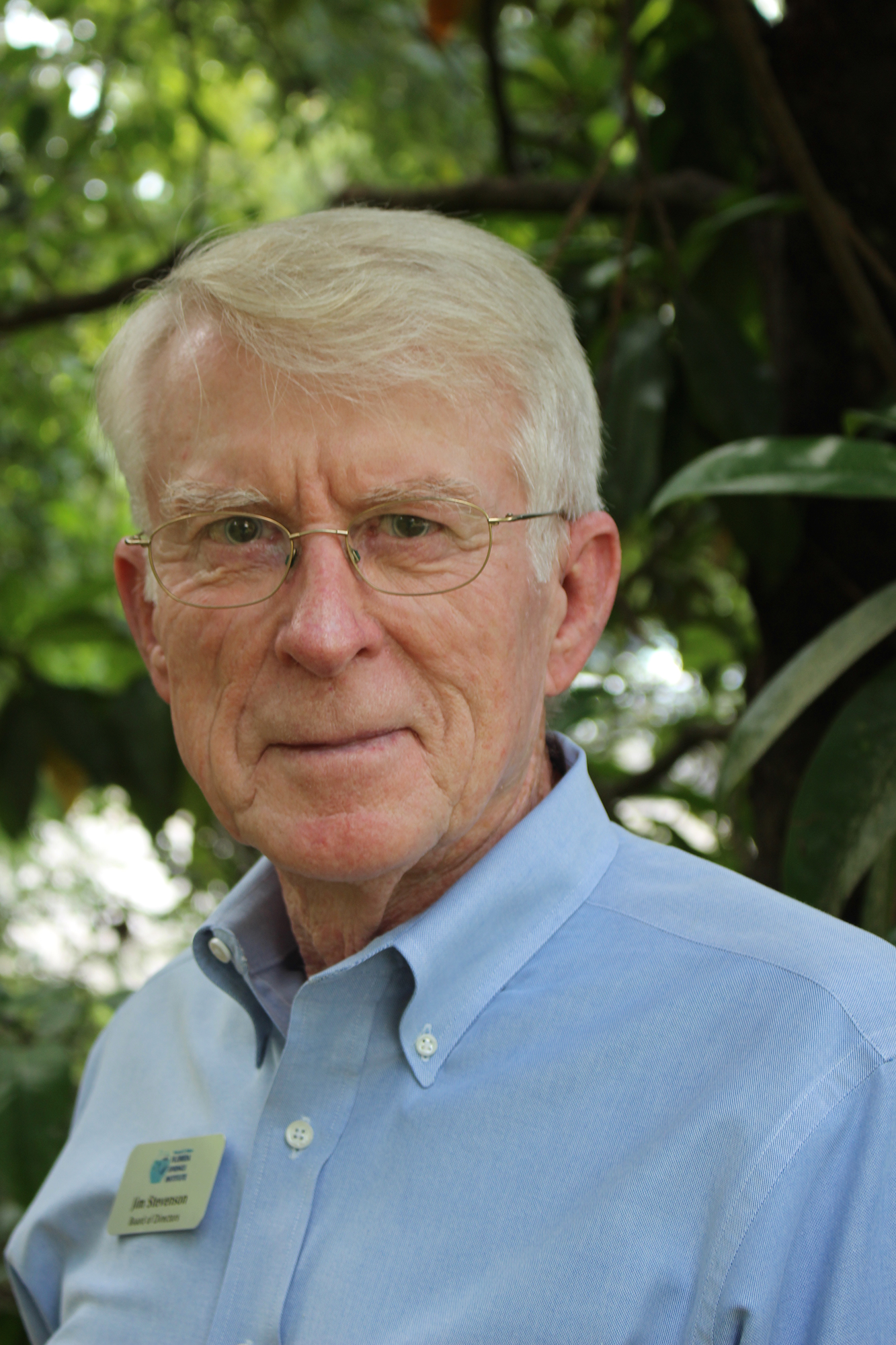
Former Florida Department of Environmental Protection official Jim Stevenson says over-pumping and too many nutrients are killing the springs. (Photo: Doug Struck)
STEVENSON: When you put water and sunlight and nutrients together, something green is going to grow.
STRUCK: The visibility has been cut so much, Wakulla is down to one glass-bottom boat. It’s taken out so seldomly that a moorhen ‚ a red-billed waterbird, has made a nest in it. Now, many of the 200,000 visitors to Wakulla Springs take the Jungle River Boat Cruise, and they still see lots of wildlife.
TOUR BOAT RANGER JEFF HUGIO: Yup. Looks like we’ve got a gator in the water up here on the right.
Crowd: Ooohhhh.
Hugio: He’s big.
Man: Oh, that’s a good one, too.
STRUCK: Years ago, there was a 33-foot diving platform. You had to get up your nerve, race up the steps and run straight off the edge. If you stopped to look down, you’d never jump.
But once in, you could snorkel down, down into a pool of wavy eel grass and gar and bass and turtles. You were amid the fish; they teased you, just out of reach. A dozen feet down was a hollow log that the bravest of swimmers would go through. Even braver scuba divers entered the labyrinth of caves that fed Wakulla. Some never emerged. Bob Thompson was a park ranger at Wakulla Springs for 11 years, and ran the tour boats.
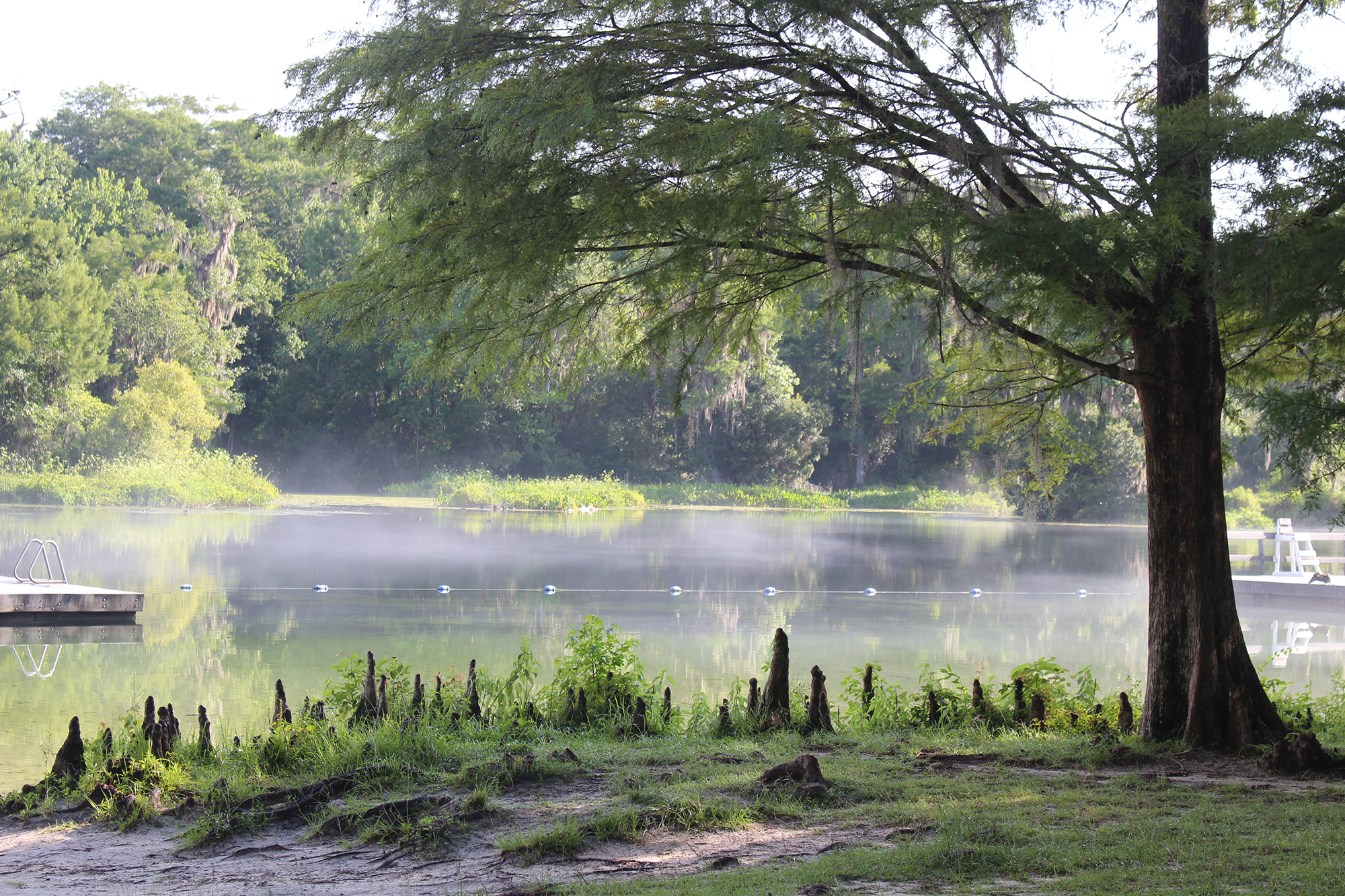
Wakulla Springs Florida was Struck’s childhood swimming hole. Now the springs are less vibrant and clear than they were when he was young. (Photo: Doug Struck)
THOMPSON: So you start the boat dock and you build some interest as you proceed towards Wakulla spring‚ and it's a drop off from 23 feet to 120 feet deep. People just go crazy when they see that, you know Gasp! And Ooh my God‚ people who have a fear of heights are quite a bit scared generally.
STRUCK: The grass‚ and the log‚ are gone. The diving platform was cut down to a mere 20 feet. And Old Joe? He was shot by a poacher, although he is not entirely gone. He was stuffed, and now watches from a glass display in the lobby of the Wakulla Springs Hotel.
Bob Thompson retired, but went back to running the tour boats for awhile as a volunteer. Now, he has stopped.
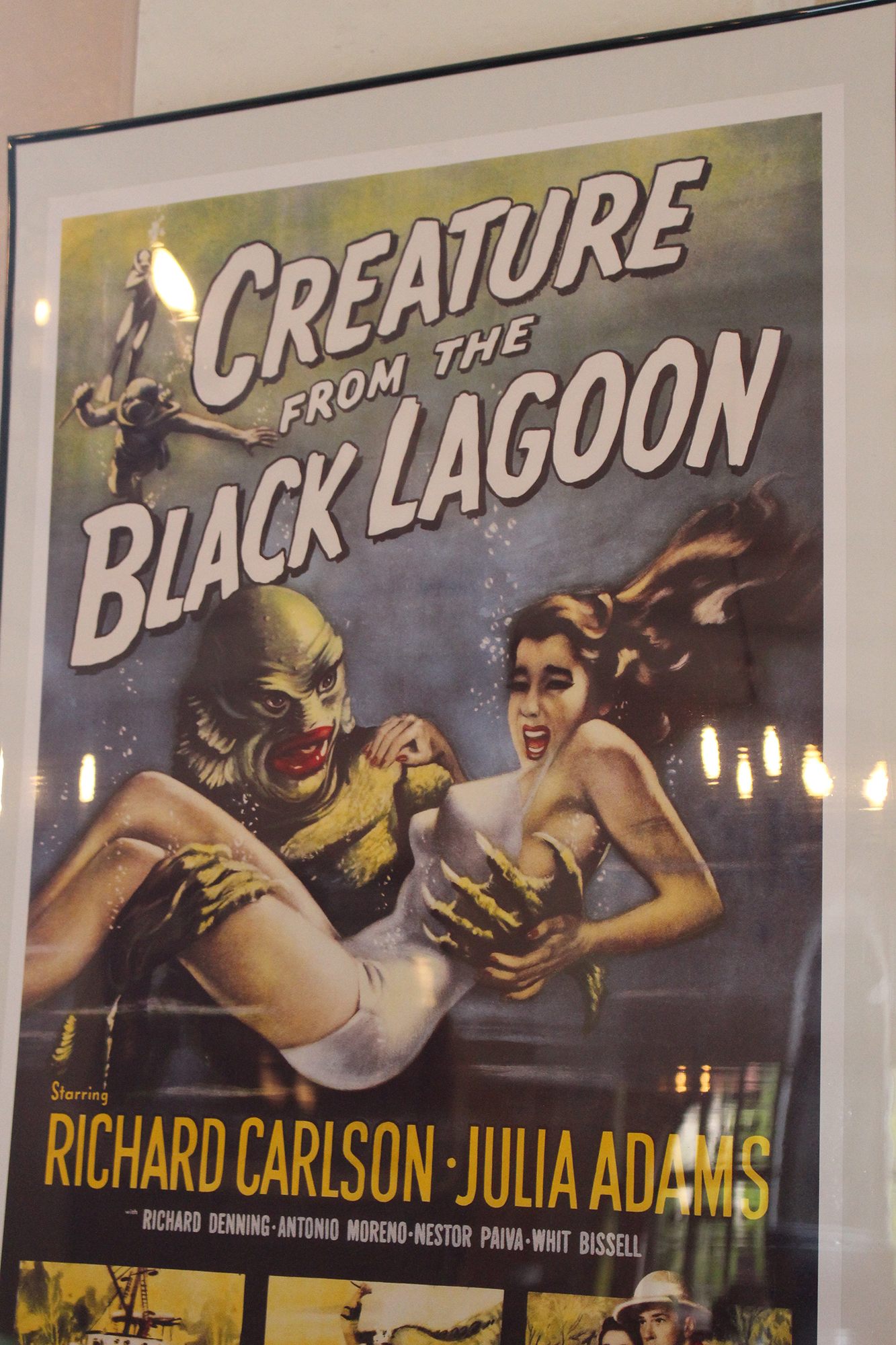
Several movies, including “Creature from the Black Lagoon” were shot at Wakulla Springs because of the brilliant clarity of the water. (Photo: Doug Struck)
THOMPSON: I un-volunteered from driving river boat tours and I wish that it weren't so, but more and more, I see what is missing. I have this vision in my eye of crystal clear, air clear water, and now the water’s green or brown, and dark. It makes me sad.
STRUCK: Well, to see for myself, I came back to Wakulla spring‚ it had been a few decades‚ and I took the plunge.
[SPLASH]
STRUCK: Just as cold as it always was. Now to see what I can see underwater. It’s disappointing. The algae is a black fuzz that coats the bottom and sucks up all the light. The luxurious waving eel grass is pretty patchy, the schools of fish are mostly missing. The Wakulla Springs of my childhood swimming hole, the Wakulla Springs of jeweled luminescence, now exists only in memories.
This is Doug Struck at Wakulla Springs, Florida, for Living on Earth.
Related links:
- Wakulla Springs Alliance
- Florida's Vanishing Springs - Tampa Bay Times
- Consequences of nutrient pollution
- About artesian aquifers
- Water quality impacts from agriculture
CURWOOD: There are photos at our website, LOE.org.
[MUSIC: Try “Tromone Shorty” Andrews, Dreamboat, Two Trumpets, Two Eras, Wise and Barking/Warner Bros Music]
CURWOOD: Your comments on our program are always welcome. Call our listener line anytime at 800-218-9988. That's 800-218-99-88. Our e-mail address is comments at loe dot org. – that’s comments at loe dot org. And visit our web page at LOE dot org.
Coming up...radicals and the beautiful spacious skies of the American west. That's just ahead on Living on Earth. Stay tuned.
ANNOUNCER: Funding for Living on Earth comes from United Technologies, a provider to the aerospace and building systems industries worldwide. UTC Building & Industrial Systems, provides building technologies and supplies, container refrigeration systems that transport and preserve food, and medicine with brands such as Otis, Carrier, Chubb, Edwards and Kidde. This is PRI, Public Radio International.
[CUTAWAY MUSIC: Preservation Hall Jazz Band, Dinah, Preservation Hall Hot 4 with Duke Dejan, Preservation Hall Recordings/Morly Music]
Beyond the Headlines
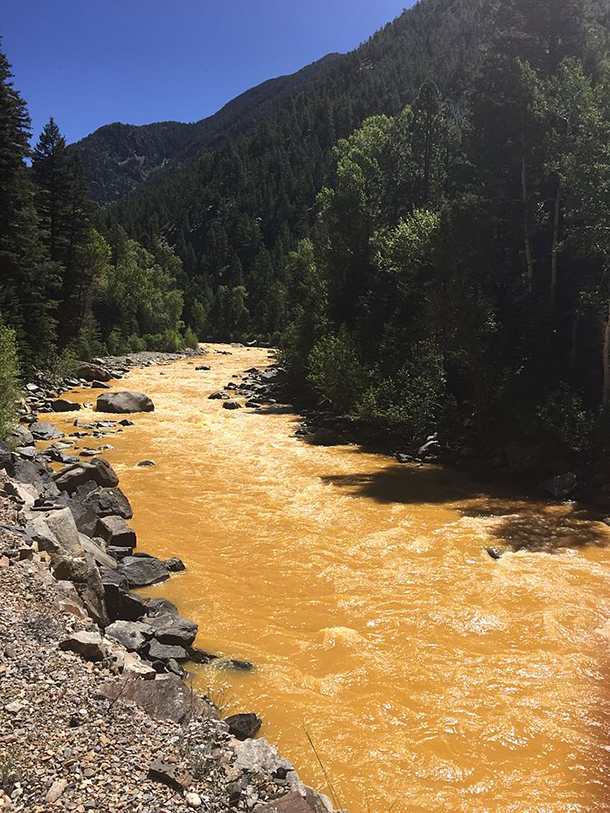
While attempting to clean contaminated water at the Golden King Mine in Colorado on August 5th, workers accidentally caused an enormous leak. The spill released 3 million gallons of mining waste into the Animas River, turning the water orange and increasing lead concentrations to 12,000 times the normal level. (Photo: River Hugger, CC BY-SA 4.0)
CURWOOD: It's Living on Earth, I'm Steve Curwood. Let’s head off beyond the headlines now with Peter Dykstra. He’s part of the team at Environmental Health News, that’s EHN.org and DailyClimate.org, and joins us on the line from Conyers, Georgia. Hi there, Peter.
DYKSTRA: Hello, Steve. Y’know over the past couple weeks I’ve been pondering the spectacle out in the Animas River, much in the news because an EPA cleanup contractor poked a hole in the waste lagoon from the abandoned Gold King mine, and three million gallons of liquid mining waste turned the river into a grotesque mustard yellow color for a few days, shutting the river to recreation and prompting drinking water concerns in Colorado, Utah, and the Navajo Nation in New Mexico.
CURWOOD: Yeah, the images of a bright yellow river in the desert were, well, shall we say‚ memorable?
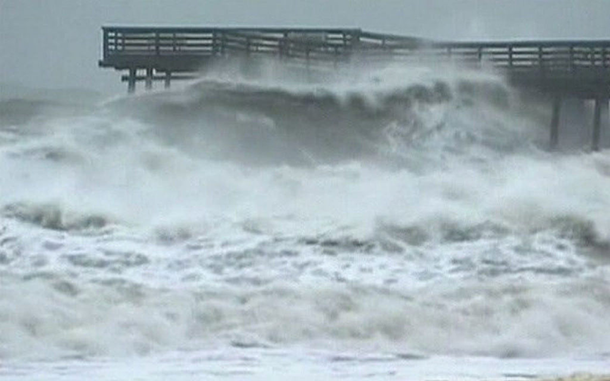
With climate change, raising sea levels and worsening storms, growing coastal populations may be in trouble. (Photo: Maf04, CC BY-SA 2.0)
DYKSTRA: Right, and EPA and other regulatory agencies are already pretty unpopular, particularly in the West, but a strange thing happened in the political blowback to all of this. Frequent EPA critics who otherwise wouldn’t know mines from a hole in the ground got really, really worked up over mine waste, now that EPA is responsible for a spill. A three million gallon spill is not good. But as you reported last week at Mount Polley, an active gold and copper mine in British Columbia last year, a dam broke sending about five billion, with a B, gallons of waste downstream. In the western US, there are thousands of abandoned hard rock mines like the one EPA was trying to clean up. And all over the country, there are coal ash dumps like the one in Tennessee that dumped a billion gallons of toxic waste into the Emory River nearly seven years ago, or a similar spill in the Dan River in North Carolina last year.
CURWOOD: Yeah, and not just the coal ash dumps at power plants, but abandoned coal mines as well, right?
DYKSTRA: Absolutely and after the Animas River spill, the newspaper in Scranton, Pennsylvania reminded its readers that abandoned coalmines in the area spill more acidic, metal-contaminated waste into local rivers every day than EPA’s gold mine accident did. In terms of staffing, budget, and political clout, EPA is in way over its head in inspecting and trying to fix mine waste hazards. Many state agencies are in an even worse position.
CURWOOD: Overwhelmed and underfunded, huh? What other cheer do you have for us today?
DYKSTRA: There’s much talk about big storms, what with Katrina’s tenth anniversary coming up on August 28th. Like mine waste, it’s a big problem, and our response doesn’t necessarily match up. We’ve been lucky for the past decade on the U.S. East Coast with Tropical Hurricanes, even though Superstorm Sandy kicked New York and New Jersey through the goalposts. And the East Coast’s luck isn’t universal: Typhoons have taken a huge toll in Asia in recent years. But our luck may be our last refuge. Hurricanes may have been sparse, but they’re by no means gone. Sea level rise will make the storm surges worse, and there are far more people living along the coast, taking a big gamble. There were 600,000 people in Lee County, Florida‚ that’s where Fort Myers is - in the last census. 100 years earlier, there were 6,000. A hundred times the increase in a hundred years. So for all the people in harm’s way, let’s make sure we do more than just remember Katrina. Let’s make sure we’re getting ready for the next one.
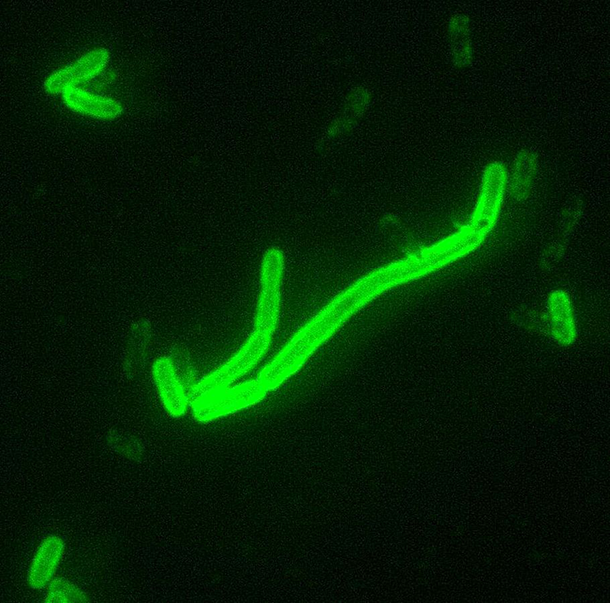
In the summer of 1630, ‘wise men’ investigated the plague-ridden streets of Florence in the world’s first public health survey. Some citizens thought vampires were to blame, but the culprit was actually the flea-borne bacterium Yersinia pestis. (Photo: CDC, public domain)
CURWOOD: So in addition to all this advice, Peter, it’s time for our history lesson. Take us back in time‚ what do you have on the calendar for us this week?
DYKSTRA: Two items about being prepared -- or not - from Italy a few centuries ago, and two reasons why we learn from history. In August, 1630, the city fathers of Florence were coping with the plague and they had a novel idea: a visitation, where wise men would comb the streets and alleys of the city to figure out what was causing the epidemic. It may have been the first public health survey in history, though many Florentine citizens remained convinced that vampires caused the plague, not flea-carrying rats as we know today.
CURWOOD: And what else?
DYKSTRA: The year 1769, the northern Italian city of Brescia, which is about midway between Milan and Venice. This is back in the day when the church is the center of everything in a community, so city leaders thought it would be a dandy place to store all the gunpowder. Beneath the steeple. That didn’t have a lightning rod, which had just been invented a few years earlier. Roughly three thousand people died and one-sixth of the city was leveled by the deadliest lightning strike up until that time in history.
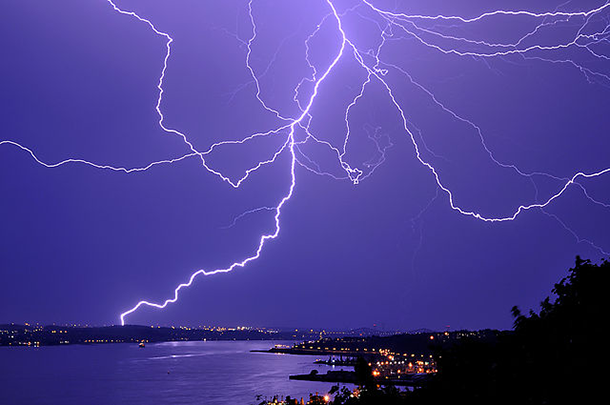
In the olden days, lightning storms sometimes carried an extra dose of deadliness. Poor decisions to store gunpowder beneath church steeples resulted in the deaths of several thousand people in eighteenth century Brescia and nineteenth century Spain. Modern cities opt for lightning rods and safer explosive storage. (Photo: JP Marquis, CC BY-SA 3.0)
CURWOOD: So there’s been a worse lightning disaster since then?
DYKSTRA: Yes, 4,000 lives were lost in 1856 on the Greek Isle of Rhodes when lightning hit a church steeple above vaults full of gunpowder and explosives. So Steve, please check the lightning rod on the Living On Earth castle.
CURWOOD: Will do. And we’ll keep our powder safe and dry and elsewhere. Peter Dykstra’s with Environmental Health News, that’s EHN.org and DailyClimate.org. Thanks for taking the time today, we’ll talk to you soon.
DYKSTRA: Alright, Steve, thanks a lot. Talk to you soon.
Related links:
- Animas River spill
- 5 years after coal-ash spill
- Dan River coal-ash spil
- Water quality problems with extensive mine drainage
- Dangers before lightning rods
CURWOOD: And there’s more on these stories at our website, LOE.org.
[MUSIC: Nitty Gritty Dirt Band, Ripplin’ Water, Genuine Hits, Capitol Records.]
Edward Abbey, Wallace Stegner and the American West
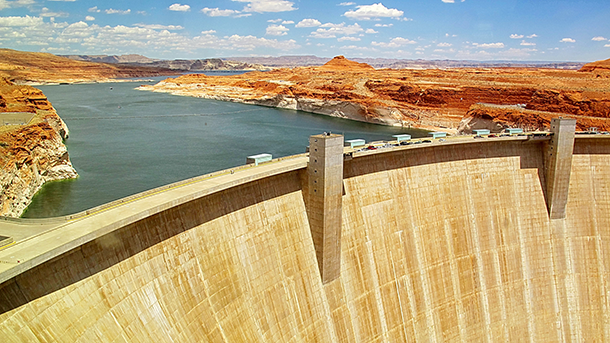
Edward Abbey’s incendiary novel The Monkey Wrench Gang involves a plot to blow up the Glen Canyon Dam, pictured above. Wallace Stegner, who also opposed dams on the Colorado River, compiled the book This is Dinosaur to help stop a dam that would have flooded Dinosaur National Monument. (Photo: AL_HikesAZ, Flickr CC BY-NC 2.0)
CURWOOD: Among the writers inspired by the American West, two of the most iconic are Edward Abbey and Wallace Stegner. When Abbey wrote the novel The Monkey Wrench Gang he seeded a new brand of radical environmentalism‚ maybe even eco-terrorism, while Stegner’s prose promoted the passage of the Wilderness Act. Now, a writer of our own time has traveled across the West and through the pages of their books to discover their legacy and relevance today. David Gessner’s new book is called "All The Wild that Remains: Edward Abbey, Wallace Stegner, and the American West", and he joins us now from Boulder, Colorado. David, welcome to Living on Earth.
GESSNER: Thanks, Steve.
CURWOOD: Tell me about these two writers, Edward Abbey and Wallace Stegner. Why did you decide to write about them in particular?
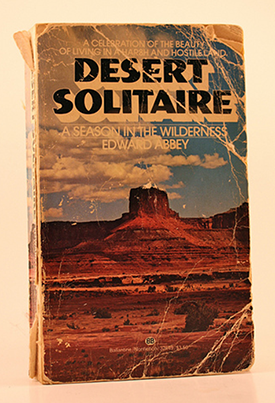
Abbey’s Desert Solitaire, a memoir of sorts, introduced scores of readers to the somewhat-fictionalized character of Ed Abbey himself and popularized Arches National Park as “Abbey’s country.” (Photo: Frank Smith, Flickr CC BY-NC 2.0)
GESSNER: Well I moved west from the beautiful city of Worcester, Massachusetts, in 1991. I'd gone through a rough period that included testicular cancer, and I applied to five graduate schools in creative writing, and I was rejected by four. The one I got into was Boulder, Colorado, and it changed my life. I was kind of airlifted from Worcester to Boulder, and as I moved west, I started to read the west, and I started with "Desert Solitaire" which is a book that has converted many a person at Abby's great kind of modern Walden, and I was kind of coming back to life and it was exhilarating reading.
Abbey proved a gateway drug to Stegner and I love the two guys, and I said, "I'm going to live in the west forever." It turned out forever lasted seven years.
CURWOOD: [LAUGHS]
GESSNER: And I took them with me when I came back east. So I moved back to Cape Cod. Suddenly I was looking at my old land in a new way. I think I just always wanted to get back to them, and three summers ago I headed west to kind of followed their trails and threaded in biography as I went.
CURWOOD: In a way, Edward Abbey and Wallace Stegner were both immigrants to America's west, kind of like you. I imagine that's part of the attraction.
GESSNER: It really was, particularly with Edward Abbey. He was born in Indiana, Pennsylvania, which is really kind of the Appalachians and he had always dreamed and fantasized about the west, had little cowboy pictures, and at 17 he hitchhiked west. And that first moment of seeing the mountains totally changed his life. He, in typical Abbey fashion, compared it to seeing a naked girl. He said it struck a fundamental chord in his imagination that has rung ever since. And I think a lot of us who made that same drive know that feeling.
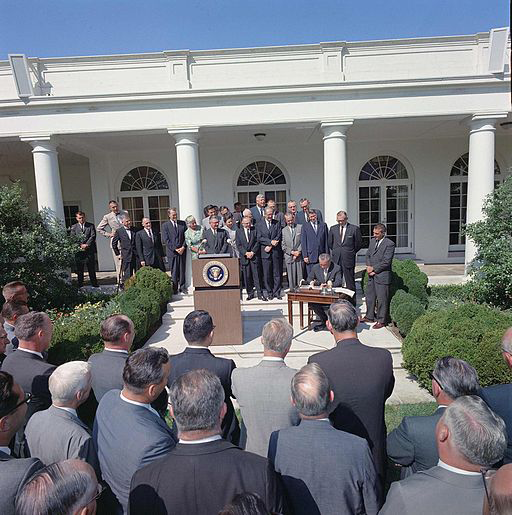
Stegner’s famous “Wilderness Letter” on the importance of federal protection of wild places was used to introduce the Wilderness Act, which President Lyndon B. Johnson signed into law on September 3rd, 1964. (Photo: Jerchel, Wikimedia Commons)
When I did it driving from Worchester, I remember I wrote in the book, “Had John Denver himself come on the radio I would have warbled along.” So that was kind of Abbey's newcomer take. Stegner’s was a little different. Though he was born in Iowa and spent his earlier years in the Dakotas. Then his dad who was this typical frontiersman migrant moved them to Washington State, then up to Saskatchewan then to Montana and Salt Lake City. So we was always in movement. Stegner, with his large mind, kind of extrapolated from that early movement and saw that as a typical western way of being, going to a place, trying to take from it and moving on. So they were different sorts of westerners, but they both were always in movement.
CURWOOD: Now how did these two writers respond to each other’s work? I gather they crossed paths at Stanford at one point.
GESSNER: They did. Well, the way they responded to each other was a little different than the way they responded to each other's work. I looked all over through Abbey's journals. You know, Stegner was his teacher for a year at Stanford. He wrote everything down in these journals. And the only thing I could find Abbey saying about Stegner was, “He had the most distinguished looking bags under his eyes.”
CURWOOD: (LAUGHS)
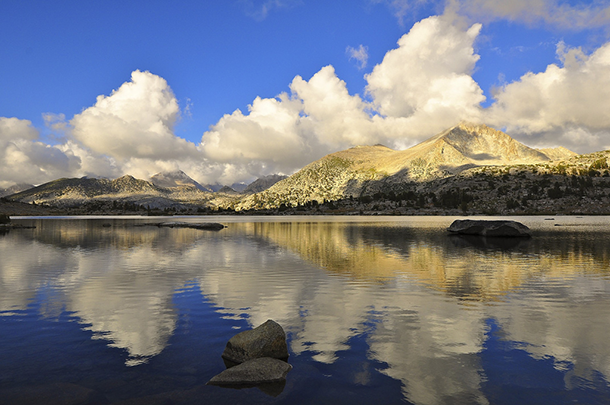
Since the Wilderness Act became law in 1964, 109.5 million acres have been designated as wilderness, amounting to 5% of the total land in the United States. The John Muir Wilderness, which includes Marie Lake, shown above, stretches for 100 miles along the crest of California’s Sierra Range. (Photo: Steve Dunleavy, Flickr CC BY-NC-ND 2.0)
GESSNER: So they didn't make much of an impression, strangely. You know, Abbey was just the kind of guy that by the 1960s Stegner would have disliked. Stegner said he didn't like writing that throbbed rather than thought. He didn't like Ken Kesey, for instance. Kesey said of Stegner, “He drank Jack Daniels and I took LSD.” And he didn't like hippies, and Abbey had a kind of hippie side to them, or at least a wild side. But what they had in common was the place itself. So in Stegner's mind that's what rescued at Ed Abbey as a writer, and Abbey said of Stegner that he had an excess of moderation. That was his complaint with Stegner.
CURWOOD: So compare their writing styles for me.
GESSNER: You know, a couple of people along the way said Stegner’s was more academic. I don't find it academic. Both men, through some of their books were nonfiction, their essential goals early on were to write the Great American novel, to be Hemingway, to be Thomas Wolfe, to score the big one. And the fiction writing of Stegner to me carries over into his nonfiction. It's smart, the later books have what I call the “grumpy grandpa” narrator where it's kind of this first person curmudgeonly sharp-tongued kind of writing. Abbey really found his voice when he turned to nonfiction. An editor in New York suggested, “why you right about that time you spent being a ranger in Canyonlands,” and he wrote it and it's amazing the way the voice comes through on the page.
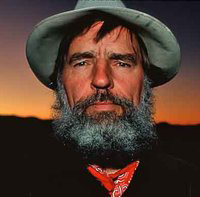
Abbey grew up in the small town of Home, Pennsylvania, but always dreamed of heading west. At seventeen, he hitchhiked there and found a place that truly resonated with him. (Photo: Tillman, Wikimedia Commons)
CURWOOD: Now, my take is that both of these men were actually pretty angry about what was going on in the west and some aspects of their own lives, and yet they had, well, rather different styles of expressing them.
GESSNER: Yeah, Stegner, whose, probably his most distilled example of that feeling was the Wilderness Letter, and he was quite upset. You k now, he'd been around for a while and was born in 1909 and he'd seen places that he loved be destroyed. But restraint was one of his watchwords and he talks in that Wilderness Letter about the west still being a place of hope. Later on in his life he started to feel some despair and he was the one who first said that we fight environmental fights, we have to keep winning them over and over and if we lose them once all is lost.
Abbey on the other hand was more directly pissed off about what was going on and he let people know. He said his writing grew from two places: love and hate. Places he had fallen madly in love with in the American West, in the desert, and he saw them despoiled, he didn't waste for words and he didn't spare words and he came blasting back at people. He compared to the philosophy of growth to the ideology of the cancer cell that kept growing and growing and killing its host. So, you know, Stegner, with his excess of moderation, may have rolled his eyes a little about Abbey, but Abbey was effective. I've never heard of a writer, I've never seen a writer, who has such direct literary influence.
CURWOOD: So in what ways has the environmental movement had to adapt to the recasting of the Monkey Wrencher that Abbey was talking about as ecoterrorist and the FBI...you know goes after folks who try to sabotage infrastructure and development.
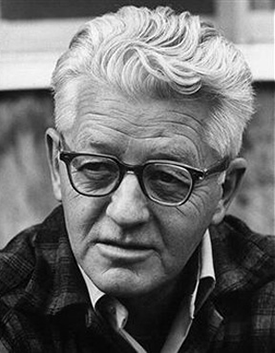
Stegner grew up west of the Rockies but only began to recognize how much the place had shaped him when he left it to attend college at the University of Iowa. (Photo: Bede735, Wikimedia Commons)
GESSNER: Well, I spoke to an FBI agent, Jane Quimby, she's a retired FBI agent, and I said what would a young imaginative Monkey Wrencher now? She kind of looked at me like I was crazy, as if she was saying you realize I'm an FBI agent right? But then we worked our way around to things like whale wars or Tim deChristopher who bid on oil land, in the waning days of the Bush Administration, and took it out of the oil companies’ hands, and landed in jail for two years in Denver. And even though that might not have done much practically, it’s the power of symbol that I think we still take from Ed Abbey. You know, Earth First unfurled the crack in the Glen Canyon dam, just a drawing of the crack, a depiction of it, and that too is the power of symbol. So Ed wouldn't do very well today, he’d probably end up in jail, I mean he shares some rough borders with the Unabomber. But what I think is still viable now is his strength and his power of symbol.
CURWOOD: So to what extent do you think Abbey and Stegner intended their writings to encourage activism?
GESSNER: Well, it's an interesting thing. Both said clearly that making great literature was their number one goal. Number two...like Stegner actually wrote it out with a one and a two, was saving wildlands and fighting for the environment. And in that regard Stegner did not mind being openly propagandistic, he didn't mind turning his ability to use words toward the fight, but he would've frowned on anyone looking at his novels and seeing that same thing there. Abbey's a little different because in a way “Monkey Wrench Gang” is kind of like "Uncle Tom's Cabin" or any overtly political book. He makes no bones about the fact that this wacky band of people is going around with dreams of blowing up the Glen Canyon dam. Abbey saw in his own lifetime that Earth First started because of his books and many other direct outcroppings of his work.
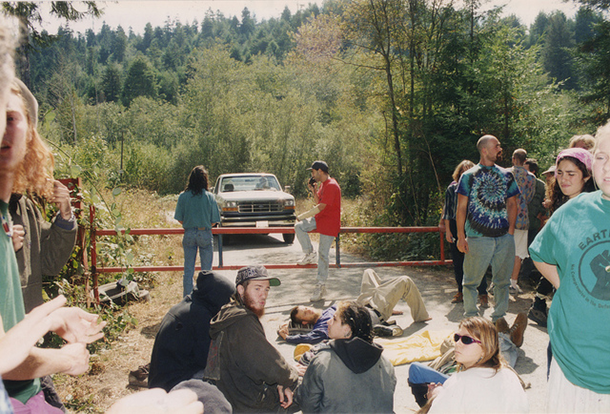
Abbey’s The Monkey Wrench Gang fomented environmental radicalism beginning in the 1970s. Earth First! activists bar entrance to Pacific Lumber Company’s land in anticipation of logging activity. (Photo: Mark Bult, Flickr CC BY-NC-ND 2.0)
CURWOOD: Now, there is a criticism that wilderness is only accessible and relevant to a select group of people, making it elitist. In fact, folks like John Muir wanted the Native Americans off of wilderness land back when he was touting wilderness. How do you respond to that, and how would Abbey and Stegner respond, do you think?
GESSNER: Well, I think Abbey would respond in a very similar fashion to Stegner but with an angrier growl. The gist would be basically: this is a huge part of the best of what America has to offer, that we have these places where people aren't. And as Stegner said in the Wilderness Letter, there's something that's essential to the American character in having these wild places. And this might sound a little high falutin’, but having spent the last month traveling around the west, I've got to say, there's a psychological and mental correspondence between being in these places and just this physical lift. There's a greatness to it, and if we give this away we give away something essential, and the fight for it was at the core of the similarity between these two men. They weren’t looking to expunge these places of people, in fact, people interacting with these places was a thrill for Stegner.
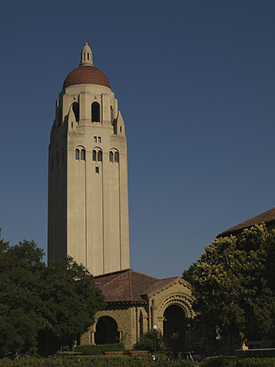
The two writers crossed paths when Stegner taught Abbey in his creative writing course at Stanford in 1957, but they apparently did not make much of an impression on each other at the time. (Photo: David Schexnaydre, Flickr CC BY-NC 2.0)
CURWOOD: So, both Wallace Stegner and Ed Abbey lived in a land that's loaded with myth, you know, the rugged individual cowboy. How did they respond to that?
GESSNER: Well, Stegner wanted to pull the veil away. He hated the rugged individualist myth. He thought it was a lie. He saw the west as a place, because it was so dry and vast, that can only be settled by sharing, and his dad was the cowboy, so he reacted against that kind of cliché. Abbey's a little different. Abbey didn't like cows, he didn't like cows on public land and he made fun of cowboys. He almost got in a shooting match during one talk in Montana, but he was wearing those cowboy boots and he was out in the desert. In a way, Abbey used the cowboy myth to fight against the cowboy. He was a rugged individualist, but he understood that rugged individualism would ultimately kill the west.
CURWOOD: So how was it that these men are relevant today? We have climate change, we have wilderness on fire, we have drilling and mining and extracting. How do they speak to today's conditions?
GESSNER: I think Abbey does directly through the use of strong language and through the use of symbol. He kind of rousts us from our slumbers. I do worry that his voice, because it's so adamant, would just be added to the noise of the kind of MSNBC versus Fox constant clutter, but I think he could cut through and one reason I think he could come through is humor. You don't get a lot of that in environmentalism and he was a very funny man.
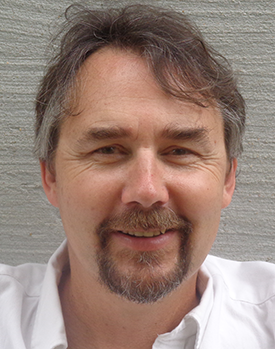
David Gessner is the author of Return of the Osprey, My Green Manifesto, The Tarball Chronicles, and other books. (Photo: courtesy of David Gessner)
Stegner tackles things as usual in a larger way. He was a master of connecting the dots. In his time, the dots in the west meant aridity, the cycles of drought, the importance of snowpack, and 50 years ago he was seeing things that are relevant to this summer in California and throughout the west. And he realized for instance that rain and snow are very different. Snowpack acts as a kind of a time release, letting water go through the summer, through the spring, whereas rain just rolls off the dry western land. So his brilliant big picture thinking would now have to include climate change, obviously, and it would also have to include loss of trees through beetles. And I've actually been singing as I've been traveling, if you remember the beginning of "All in the Family" where Edith and Archie sing, "Mister, we could use a man like Herbert Hoover again." I've been singing, "We could use a man like Wallace Stegner again." He's that kind of big thinker, he's really not just an American type but a western type.
CURWOOD: David Gessner is the author of "All The Wild that Remains" and eight other books, including "The Return of the Osprey" and "My Green Manifesto". Dave, thanks for joining us today.
GESSNER: Thank you very much, Steve.
Related links:
- Author David Gessner’s site
- About Edward Abbey
- About Wallace Stegner
- Ecotone magazine
- Bill & Dave’s Cocktail Hour
[MUSIC: Herb Ellis, America the Beautiful, Texas Swing, Justice Records]
CURWOOD: Living on Earth is produced by the World Media Foundation and brought to you from the campus of the University of Massachusetts, Boston, in association with its School for the Environment, developing the next generation of environmental leaders. Our crew includes Naomi Arenberg, Bobby Bascomb, Emmett Fitzgerald, Lauren Hinkel, Shannon Kelleher, Helen Palmer, Adelaide Chen, Jenni Doering, John Duff, and Jennifer Marquis. Our show was engineered by Tom Tiger, with help from Jake Rego, Noel Flatt and Jeff Wade. Alison Lirish Dean composed our themes. You can find us anytime at L-O-E dot org - and like us, please, on our Facebook page – it’s PRI’s Living on Earth. And we tweet from @LivingOnEarth. I'm Steve Curwood. Thanks for listening.
ANNOUNCER 1: Funding for Living On Earth comes from the Grantham Foundation for the protection of the environment, supporting strategic communication and collaboration in solving the world’s most pressing environmental problems. Support also comes from the Kendeda Fund, and Trinity University Press, publisher of Moral Ground, Ethical Action for a Planet in Peril, 80 visionaries who agree with Pope Francis, climate change is a moral issue for each if us, T U Press dot org, and Gilman Ordway for coverage of conservation and environmental change.
ANNOUNCER 2: PRI. Public Radio International.
Living on Earth wants to hear from you!
Living on Earth
62 Calef Highway, Suite 212
Lee, NH 03861
Telephone: 617-287-4121
E-mail: comments@loe.org
Newsletter [Click here]
Donate to Living on Earth!
Living on Earth is an independent media program and relies entirely on contributions from listeners and institutions supporting public service. Please donate now to preserve an independent environmental voice.
NewsletterLiving on Earth offers a weekly delivery of the show's rundown to your mailbox. Sign up for our newsletter today!
 Sailors For The Sea: Be the change you want to sea.
Sailors For The Sea: Be the change you want to sea.
 The Grantham Foundation for the Protection of the Environment: Committed to protecting and improving the health of the global environment.
The Grantham Foundation for the Protection of the Environment: Committed to protecting and improving the health of the global environment.
 Contribute to Living on Earth and receive, as our gift to you, an archival print of one of Mark Seth Lender's extraordinary wildlife photographs. Follow the link to see Mark's current collection of photographs.
Contribute to Living on Earth and receive, as our gift to you, an archival print of one of Mark Seth Lender's extraordinary wildlife photographs. Follow the link to see Mark's current collection of photographs.
 Buy a signed copy of Mark Seth Lender's book Smeagull the Seagull & support Living on Earth
Buy a signed copy of Mark Seth Lender's book Smeagull the Seagull & support Living on Earth

